Hiking and conquering mountain peaks are increasingly popular among young people. However, to make the journey more complete and safe, choosing the right outdoor shoes is extremely important. So what are outdoor shoes ? Let's find out with Shondo right away!
1. What are outdoor shoes?
Outdoor shoes are specially designed for outdoor activities, with outstanding features such as durability, sturdiness and optimal foot protection.
Unlike regular sports shoes, outdoor shoes apply many advanced technologies, use high-quality materials, and pay attention to every detail to adapt to diverse terrains and complex weather conditions.
Distinguishing between outdoor shoes and regular sports shoes:
- Durability: Outdoor shoes have superior durability, can withstand pressure and impact better on rough terrain.
- Waterproof and breathable: Waterproof and moisture-wicking technology keeps shoes dry and breathable, providing comfort to the user.
- Ankle protection: Most outdoor shoes are designed to hug the ankle, minimizing the risk of sprains and dislocations.
- Grip sole: The sole has high grip, effectively preventing slipping on many surfaces.
- Weight: The product is lightweight, helping the wearer move flexibly and comfortably.
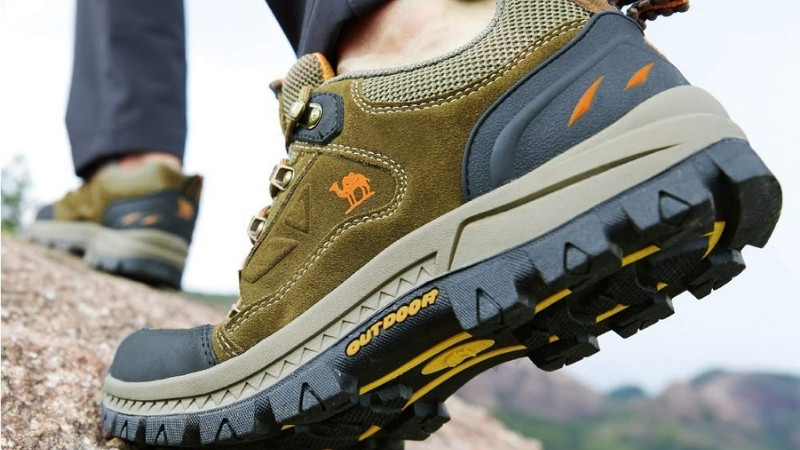 Outdoor shoe sole has high adhesion, effective anti-slip[/caption]
Outdoor shoe sole has high adhesion, effective anti-slip[/caption]
2. Why should you use outdoor shoes?
After knowing what outdoor shoes are, let's find out why we should use outdoor shoes, especially in outdoor activities:
- Adapts well to terrain: Specialized design helps shoes grip firmly on rough, slippery terrain such as rocky mountain roads and trails, reducing the risk of falling.
- Optimal foot protection: Helps support and stabilize the ankle, minimizing the risk of injuries such as sprains and dislocations. In addition, the shoe material is waterproof, breathable, and keeps feet dry and comfortable.
- Enhanced performance: The light weight and good grip sole of outdoor shoes help you move faster, more flexibly and easily, even when carrying heavy loads.
- Increased safety and experience: Using the right type of shoes helps you feel more secure when participating in outdoor activities, fully enjoying the fun and freedom.
 Outdoor shoes support ankle stability, reducing the risk of injury[/caption]
Outdoor shoes support ankle stability, reducing the risk of injury[/caption]
3. Popular types of outdoor shoes
Choosing the right outdoor shoes is extremely important to protect your feet and support effective movement. Let's explore the following popular outdoor shoes with Blog Shondo:
3.1. Hiking shoes
Hiking shoes are designed specifically for mountain climbing activities, requiring high durability and good foot protection. With a sturdy sole, hiking shoes support movement and carry heavy loads well on long distances.
Suede, nylon or leather combined with waterproof technology helps to keep feet dry and comfortable. The midsole has a soft cushioning layer, minimizing the impact on the foot when moving. Some hiking shoes are also equipped with crampons to support movement on ice and snow.
Suggested hiking shoe models:
- Columbia Facet 75 OutDry
- Salomon X Ultra 4 GTX
- Hoka Speedgoat 5
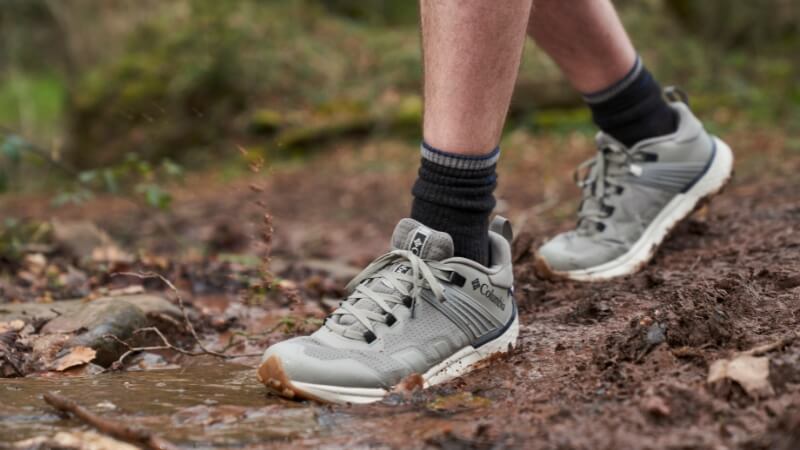 Columbia Facet 75 OutDry hiking shoe[/caption]
Columbia Facet 75 OutDry hiking shoe[/caption]
3.2. Trail running shoes
This is a specialized shoe for running on many different terrain surfaces such as trails, hills, forests, etc. thanks to its good adhesion and optimal foot protection. With a sole design with a firm grip, trail running shoes help you move more safely on difficult terrain.
The shoe structure is sturdy, limiting ankle rotation when running, while minimizing noise when moving. Depending on the type of terrain, trail running shoes are divided into types such as: Light trail (flat terrain), rugged trail (rough terrain) and off-trail (tough terrain).
Some suggested trail running shoes:
- Hoka Mafate Speed 4
- Altra Lone Peak 7
- Topo Athletic Ultraventure 3
 Topo Athletic Ultraventure 3 Shoes[/caption]
Topo Athletic Ultraventure 3 Shoes[/caption]
3.3. Approach shoes
Approach shoes are designed specifically for rock climbing activities, with outstanding advantages of high adhesion and durability. The shoe sole is made of quality rubber, has good adhesion, increases friction to help you move safely on slippery rock surfaces.
In addition, approach shoes also have a durable structure, reinforced toe cap for optimal toe protection. The shoe material is also easy to clean after each use.
Suggest some approach shoe models:
- La Sportiva TX Guide
- Scarpa Crux
- La Sportiva TX2 Evo
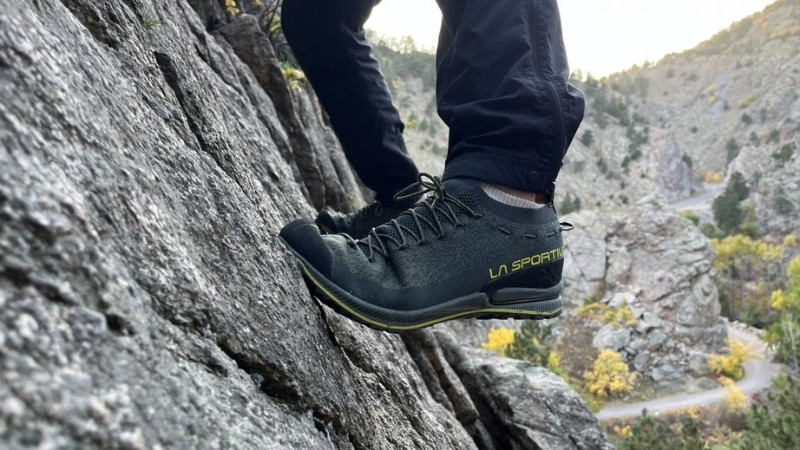 La Sportiva TX2 Evo shoe model[/caption]
La Sportiva TX2 Evo shoe model[/caption]
3.4. Hiking sandals
Hiking sandals are sandals for walking, providing a more comfortable and airy feeling. The advantage of hiking sandals is that they are light in weight, do not cause foot fatigue, and are suitable for short hikes and easy terrain. However, because there is no upper part to protect the ankle, hiking sandals can easily lead to injury when falling.
Suggested hiking sandal models:
- Chaco Z/Cloud
- Bedrock Sandals Cairn Adventure
- Teva Original Universal
- Shondo F6S Sandals
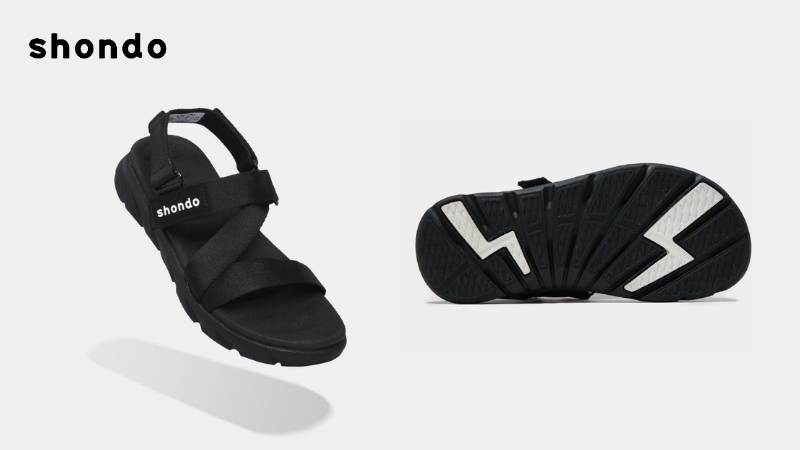 F6S sandals have good drainage thanks to the slot design in the sole[/caption]
F6S sandals have good drainage thanks to the slot design in the sole[/caption]
3.5. Mid-weight boots
Mid-weight boots have a classic design, used for long-distance mountain climbing trips. The advantages of the product are good ankle protection, durable material, effective water resistance, minimizing the risk of injury when moving on rough terrain.
However, high insoles can hinder movement, making you feel uncomfortable when climbing slopes and affecting your speed.
[caption id="attachment_6285" align="aligncenter" width="800"]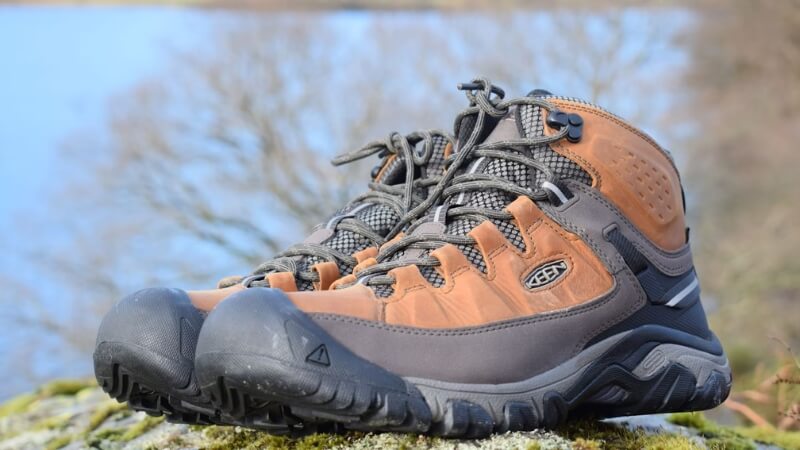 Mid-weight boot provides good ankle support[/caption]
Mid-weight boot provides good ankle support[/caption]
3.6. Heavy boots
Heavy boots for the most challenging terrain. The shoes have a sturdy frame, high padding, and optimal ankle protection during movement.
High-quality Gore-tex material is commonly used in the production of heavy boots, helping to effectively waterproof, while allowing water vapor to escape, keeping feet dry.
[caption id="attachment_6286" align="aligncenter" width="800"]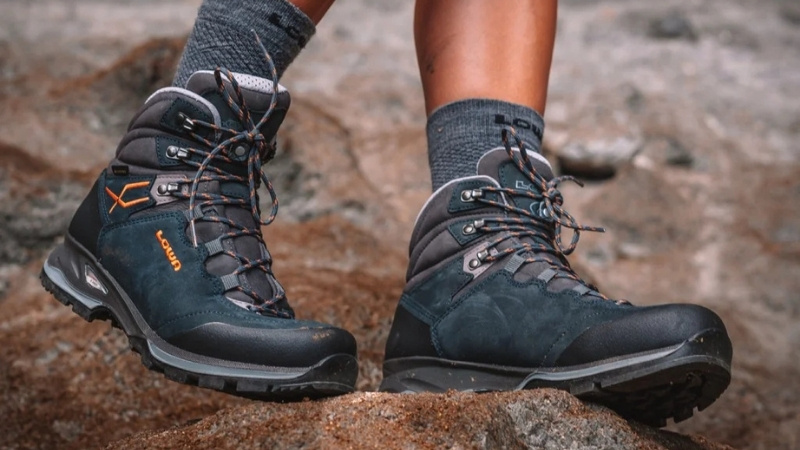 Heavy boots are often used for challenging terrain[/caption]
Heavy boots are often used for challenging terrain[/caption]
3.7. Water shoes
The shoes have good traction, protecting the feet from the effects of the water environment. The material of water shoes is usually synthetic fiber or rubber, which has the ability to drain water quickly, is anti-slip and effectively prevents blisters.
[caption id="attachment_6287" align="aligncenter" width="800"]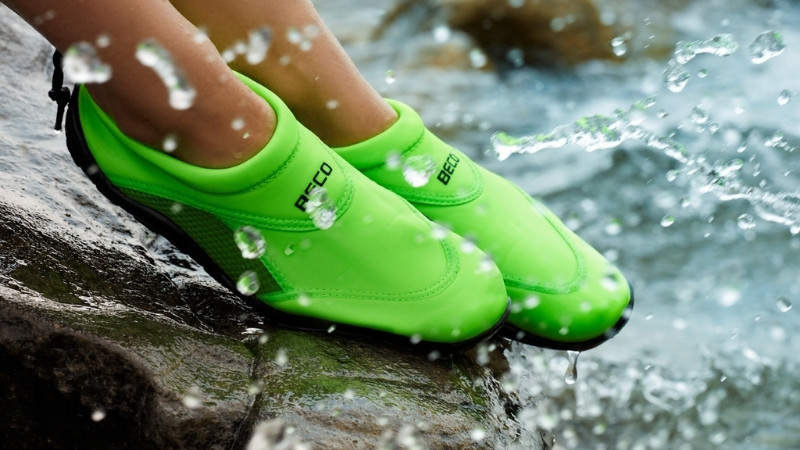 Water shoes are designed specifically for activities in water environments[/caption]
Water shoes are designed specifically for activities in water environments[/caption]
3.8. Ski/snowboard/snow boots
These are specialized shoes for activities in cold, snowy, and ice environments. Their advantages are the ability to keep feet warm, good adhesion on slippery surfaces, and providing a comfortable feeling when moving.
[caption id="attachment_6288" align="aligncenter" width="800"]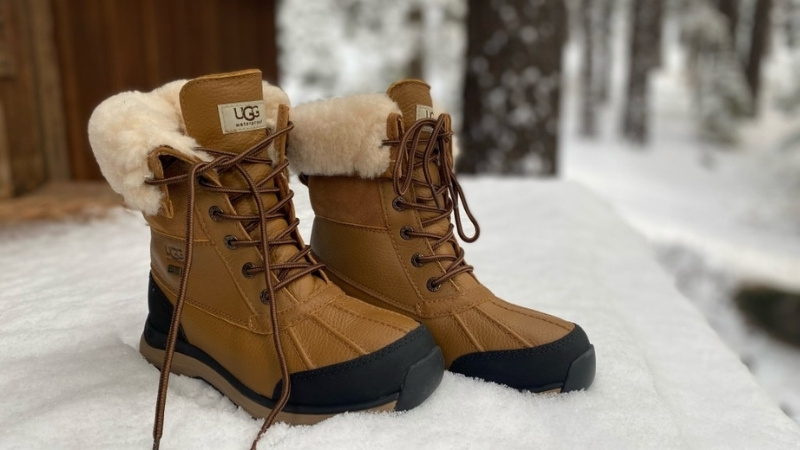 Snow boots have good grip and keep the wearer warm[/caption]
Snow boots have good grip and keep the wearer warm[/caption]
3.9. Mountaineering boots
Mountaineering boots are specialized shoes for climbing rugged, harsh mountains, often facing ice and snow.
The shoes are designed to move well on ice and snow, keep your feet warm and are waterproof. The sole is sturdy, reducing slipping, while the high upper provides optimal ankle protection.
[caption id="attachment_6289" align="aligncenter" width="800"]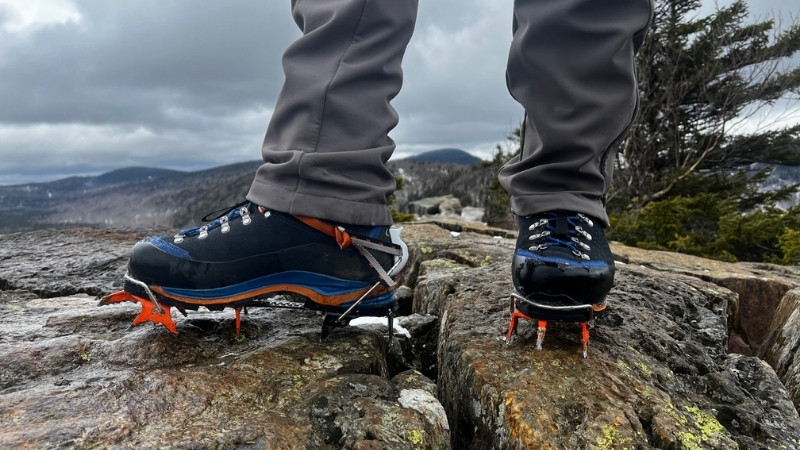 Mountaineering boots for rugged mountain climbing, often facing ice and snow[/caption]
Mountaineering boots for rugged mountain climbing, often facing ice and snow[/caption]
4. Related questions
4.1. How to choose the right size of outdoor shoes?
Besides learning what outdoor shoes are, we also need to know how to choose the right shoe size:
- Measure foot length: Use a tape measure to measure the length from heel to longest toe.
- Refer to the size conversion table: Each shoe brand will have its own size conversion table, compare your foot measurement with the conversion table to choose the correct size.
- Choose shoes that are 0.5 - 1cm larger than your feet: This space helps you move more comfortably, and also has enough space to wear thick socks.
4.2. How to preserve outdoor shoes to keep them durable and beautiful?
To keep your outdoor shoes durable and beautiful, you need to note the following:
- Clean shoes after each use: Remove dirt from shoes with a soft brush and clean water. Avoid soaking shoes in water for too long.
- Dry shoes in a cool, dry place: Avoid drying shoes directly in sunlight.
- Use specialized products: Preserve shoe materials with specialized products such as waterproof spray, leather cream,...
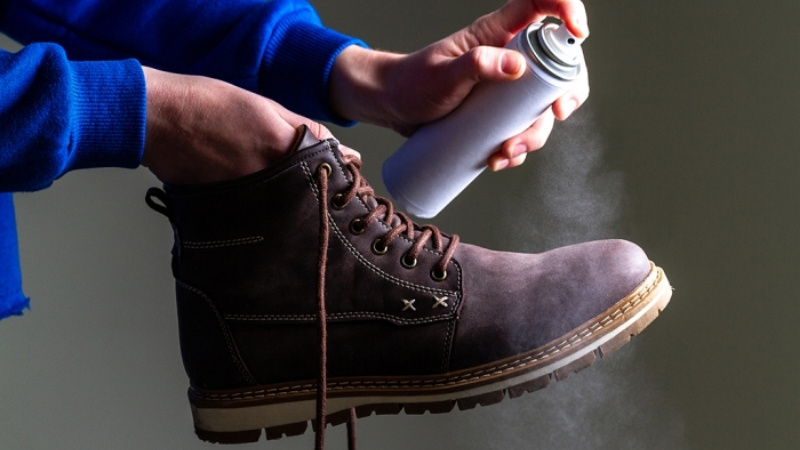 Preserve shoe materials with specialized products[/caption]
Preserve shoe materials with specialized products[/caption]
Hopefully, this article has provided you with useful information about what outdoor shoes are and the popular types of outdoor shoes, making it easier for you to find the ideal pair of shoes for your upcoming adventures.
Related Articles

Nếu bạn đã và đang sở hữu cho mình đôi giày ballet sneaker nhưng vẫn chưa biết outfit nào phù hợp. Xem ngay bài viết này với 5 cách phối đồ với giày ballet sneaker đẹp không có điểm trừ cùng Shondo...

Squid Game 3 chính thức khuấy đảo trên màn ảnh, bạn đã sẵn sàng ngồi liền 6 tập để xem cuộc chiến sinh tồn lần cuối của Gi-Hun chưa? Dưới đây là combo cuối tuần “chuẩn sinh tồn hiện đại” mà Shondo ...

Phong cách Retro là gì mà được nhiều người săn đón như vậy? Cùng Shondo tìm hiểu qua bài viết sau đây để biết thêm nhiều điều thú vị từ điểm đặc trưng cho đến cách phối đồ như thế nào là chuẩn nhé....

Một trong những trào lưu nổi bật gây sốt trên các cộng đồng yêu thời trang chính là phong cách Maillard. Nhưng điều gì khiến chúng lại có sức hút lớn đến như vậy? Shondo sẽ giúp bạn hiểu rõ hơn về...

Áo Polo nữ - item nghe thì tưởng già nhưng thực ra lại đang quay trở lại mạnh mẽ. Từ sân golf đến sân trường, từ văn phòng đến quán cafe, chiếc áo đơn giản với cổ bẻ đặc trưng này bỗng trở nên đa n...
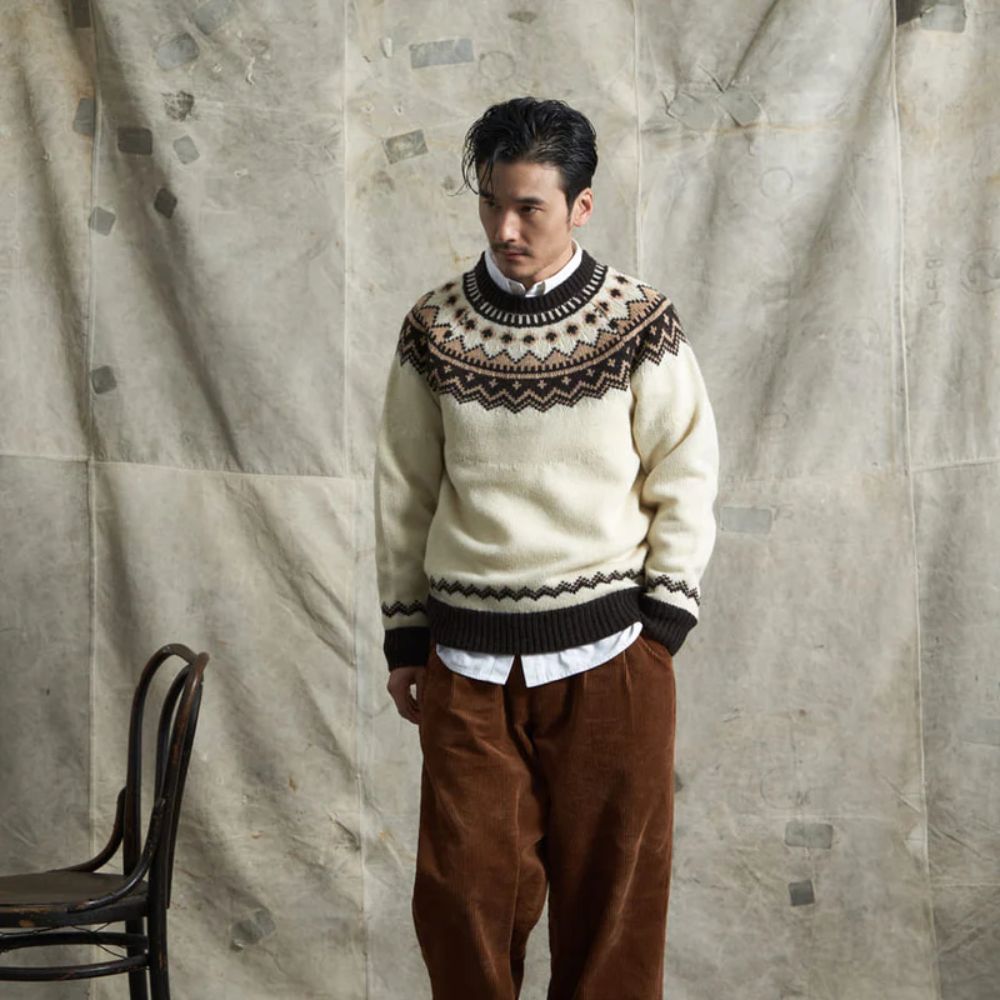
Phối đồ Vintage trong giới thời trang mang đến những nét độc đáo rất riêng. Phong cách này trở thành xu hướng phổ biến không chỉ ở nữ mà còn xuất hiện nhiều ở nam giới. Shondo sẽ cho bạn thấy điều ...

